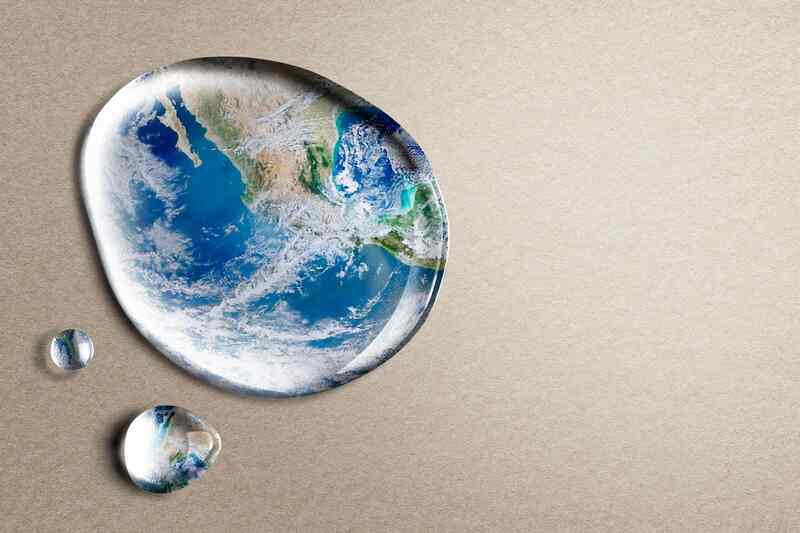Water shortages seem inevitable as many countries struggle to supply reliable water to their economies because of growing water demand. There are, however, a lot of factors that affect water usage, like population growth, industrialization, and agriculture.
Globally, two thirds of the population could face water shortages by 2025. Although water conservation and consumption awareness have increased over the years, much more needs to be done. How can we reduce our water footprint?
What Is a Water Footprint?
Businesses, individuals, communities, and countries have water footprints that measure how much water they use directly and indirectly. Global water footprint is calculated based on trade flows that embodied water.
Three types of water are used when calculating water footprints: green, blue, and grey.
- Green Water: A green water footprint is measured by the volume of water evaporating from the soil after rains and then used by plants for production or irrigation. Agriculture and forestry use water in different ways.
- Blue Water: This refers to how much water is consumed from rivers, lakes, or other water bodies. This could involve removing water from a lake or river for production purposes, e.g. household water consumption or industrial usage in the UK.
- Grey Water: This measure measures how much water is used to dilute pollutants before they are discharged, and water is polluted during production.
The water footprint can best be described as measuring how much water society needs to produce goods and services. This shows how we can impact the environment and how we can find ways to conserve energy, reduce water consumption and increase efficiency.
What Are the Main Causes of Water Footprints?
Four factors primarily determine countries’ water footprint:
- Consumption volume as a percentage of gross national income
- Patterns of consumption, such as high versus low meat consumption
- Growth conditions are influenced by climate
- The use of water efficiently in agriculture is a farming practice.
Which Countries Use the Most Water?
There are several factors that influence water consumption in different countries, such as population growth, industrialization, and agriculture. Daily water consumption is highest in the following five countries:
- The United Arab Emirates 2,270 gallons per day
- The United States 2,200 gallons per day
- Canada 1,687 gallons per day
- Israel 1,687 gallons per day
- Botswana 1,485 gallons per day
What Are Some Ways That We Can Reduce Our Global Water Footprint?
We can reduce our water consumption as individuals and businesses in several ways. Even the smallest steps can make a big difference. Take a look at these tips for reducing your water consumption right now.
Don’t Let the Water Run
Be aware of how much water you consume. By turning off the tap while brushing your teeth, you can save 6 litres of water each minute. Ensure leaky taps are also fixed – and stop 60 litres of water from draining every week.
Use Less Water Switching to a Shower
You can save water by switching from bathing to showering. Showers should last no longer than 4 minutes if you’re a shower person. Did you know the water you use in a power shower can reach 17 litres per minute? A water-saving shower head lets you lather in less water, saving you money and water.
The water supply is aerated when you use these cheap adapters, so the same water pressure is achieved whilst using much less water! Check with your water provider for details about getting a free shower timer.
Pile up the Dirty Clothes
When you wash a full load of clothes, you use less water and energy than when you wash two-half loads. Additionally, this will result in lower bills.
Consider Using a Washing up Bowl
When doing the dishes, fill a bowl rather than running the tap. When you fill a bowl with water and wash the cleanest items first, you won’t have to change the water very often. When you wash everything under the faucet, you will waste a lot of water.
Reducing Food Waste
Producing cereal, fruit, and other food requires a lot of water. Every year, UK households waste more than 7 million tonnes of food and drink, and your annual savings could reach £800 if you waste less food.
Final Thoughts
In a world where the demand for freshwater is growing, availability is limited. There are several places where humanity’s water footprint exceeds sustainable levels, and the distribution is unequal. However, changing habits can make a big difference. Businesses and individuals can reduce their carbon footprints and save water by making even the smallest changes today.


